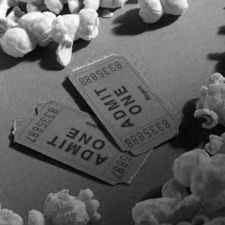Motion Graphics in Film

A title sequence generally refers to the method by which cinematic films or television shows present their title, key cast and/or production members utilising conceptual visuals and sound. It should not be confused with opening credits which are generally nothing more than a series of superimposed text.
Since the invention of the Cinematograph simple title cards were used to top and tail silent film presentations in order to identify both the film and the production company involved, and to act as a signal that the film had started and then finished. In silent cinema title cards were used throughout to convey dialogue and plot and it is in some of these early short films that we see the first examples of title sequences themselves, being quite literally a series of title cards shown at the beginning of a film. The arrival of sound did little to alter the convention except that the sequence was usually accompanied by a musical prelude.
This remained the convention for many years until the advent of television forced the major film studios to invest in developing cinema in order to win back a diminishing audience. The "cast of thousands" epics shot on various patent wide-screen formats were a direct response to television's successful invasion of the leisure marketplace. Part of cinema's new prestigious and expansive quality were orchestral musical preludes before the curtains opened and long title sequences - all designed to convey a sense of gravitas it was hoped television would be unable to compete with. As cinema's title sequences grew longer we begin to see the involvement of graphic design luminaries such as Saul Bass, which directly influenced the 1960s television predilection for creating strong graphics-led sequences for many shows.
Since the late 1950's films' title sequences have often become a showcase for contemporary design and illustration. The title sequences of Saul Bass and Maurice Binder are among the best examples of this though they inspired many imitators both in cinema and on television. In recent years Kyle Cooper's celebrated title sequence for David Fincher's Se7en (1995) again influenced a whole host of designers, though it is by no means unusual to see a film whose title sequence merely superimposes text over a black background, reflecting that the form's function remains the same today as it did with the advent of silent cinema.
Information courtesy of wikipedia.org.
Photograph courtesy of styletraxx.com.
